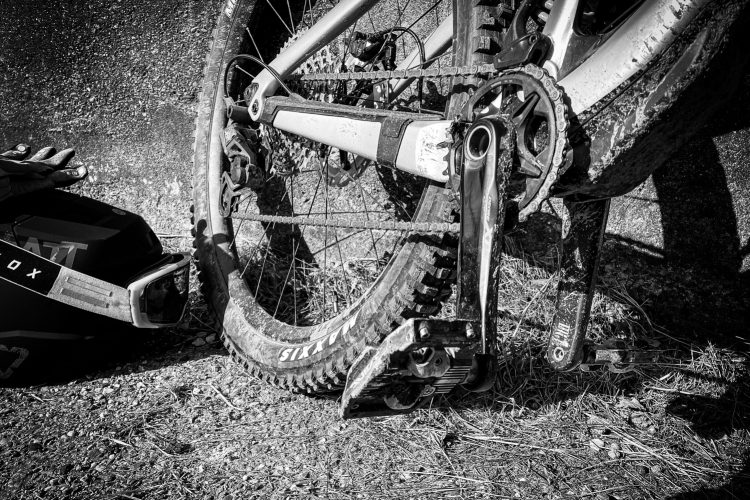You can learn a lot from random noises you hear out on the bike trail. Most of these noises can’t be heard if you’ve got ear buds in blasting the Red Hot Chili Peppers (or, if you’re like a guy I used to bike with, Sheryl Crow). I’ve found that when I truly tune in to what is happening around me on the trail–not just with my eyes, but with my ears, too–I bike more effectively and also more responsibly.
Here are five ways auditory cues can help you on the bike trail:
1. Listening lets you know when the silent speeder (or unaware downhiller) is behind you.
Why is it that some people just refuse to say, “Hi! Can I pass?” This seems especially true on the Prime Cut trail out at 18 Road. During busy seasons it’s inevitable that I’ll hear a cough or a shifting of gears right behind me, and realize someone is there who would like to pass. On other trails, like Kokpelli’s Wrangler, I’ve come through a particularly fast section only to suddenly hear someone jump and land way too close to my rear tire for comfort. In both situations, listening and being attuned to what is going on around me allows me to pull over and let the silent speeder or unaware downhiller pass by. Then I can go on my merry way at my own pace.
2. Listening lets you know when someone is riding up hill and you probably should yield.
I know, as of late, this whole “yielding to the uphill rider” thing has gotten murky, but in any case if I’m riding with a group and someone ahead of me yells, “rider up!” I like to be able to hear it so that I can stop and give that rider some room. If I’ve got earbuds in then I won’t hear my friend and I’ll end up looking like a jerk when everyone else has stopped for the climber except me.

3. Listening tells you when a steep climb or technical descent is coming.
There have been plenty of times on new trails when listening to the riders in front of me has let me know to shift gears for a climb or drop my seat post for a descent. For climbing there are tell-tale cues like grunts, cussing, and gear shifts that I hear. When I do, I know it’s time to adjust my fork, shift, and get ready to climb. For downhills, sometimes the distinctive shink of a seat post dropping is clue enough that there’s some downhill action headed my way! Other clues that a fun section is approaching include “Woo hoo!”s and a sudden rattling of a bike moving very quickly over rocks. Knowing this lets me also prepare for the downhill ahead by shifting into my middle chain ring and dropping my seat post.
4. Listening can tell you if something is wrong with your bike.
Sure, certain bike issues, like ghost shifting, are obvious even without listen, but other problems are often heard before they’re noticed in other ways. For example, while biking one day on Mary’s Loop I kept hearing this weird little ping ping coming from the front of my bike. We stopped at an overlook and the BF hopped on and immediately realized my brakes were a bit loose. I’m glad I was listening closely and we were able to solve that problem before I rode anything technical.

5. Listening can tell you if someone’s in trouble.
If you’re in the lead on a trail, listening closely may the only way you’ll know if your riding buddy crashes behind you. Hearing that “OOF” or the sound of a bike hitting the ground, or even just something that sounds odd will make you stop and turn around. If you’re not paying attention or if you’re listening to music your buddy (or girlfriend/boyfriend) could be lying there in pain for a bit before you realize it.
In the end I think that being attuned to the world around you is always a good idea–whether you’re on your bike or not. Still, listening to the sounds of shifting gears, groaning climbers, and passing bikers while you’re riding can provide you with valuable information, and might even make you a better biker.



















